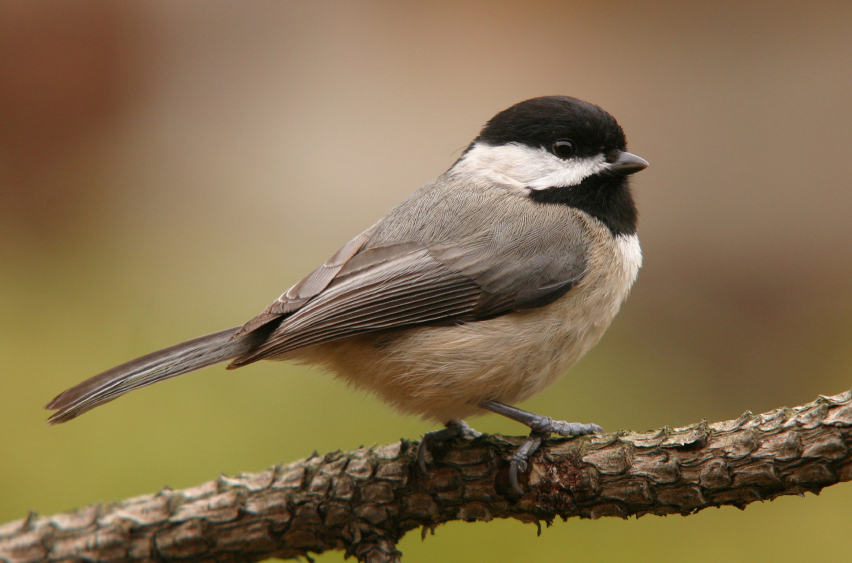Poecile carolinensis
Ours is a chickadee nation! Black-capped Chickadees range across the northern tier of the United States. Boreal Chickadees are found farther north. Carolina Chickadees inhabit the southeast. Mountain Chickadees are located in the Rockies. Chestnut-backed Chickadees live along the Pacific coast. In the Aspen Song® marketing region the dominant species is the Black-capped Chickadee. Ah, but not so fast! Our friends in southern portions of New Jersey and Pennsylvania live in the zone where the ranges of Black-caps and Carolinas meet! Learning to distinguish between them can be a challenge for backyard hobbyists, not to mention that the two species may hybridize with one another in this overlap region.

Carolina Chickadee
What are the visual contrasts? The Carolina Chickadee is slightly smaller in overall size, has a proportionally smaller head and shorter tail, and the black bib has a neater and more well defined lower edge. Discerning birders also look closely at the white showing on the bird’s wings and tail. Black-capped Chickadees show more white on the feathers covering the primary feathers of their wings and along the edges of their tail feathers. With such subtle differences, how do we know these are separate species? Genetics tell us so.
Thankfully, all chickadees tend to be vocal backyard visitors. The call note of the Carolina Chickadee, “chick-a-dee-dee-dee,” is higher pitched and faster than their northern counterparts. The Black-cap’s clear whistled “fee-bee” song is replaced by a very different sounding “fee-bee, fee-bay.” Count syllables! However, if you are in that geographical zone and it is a hybrid that is singing, all bets are off!
In January you will find Carolina Chickadees in groups that forage together, moving from one food patch to another. Your feeder qualifies as a “food patch.” Natural cavities become important roosting sites during winter evenings. Your nestbox qualifies as a “roosting site.” Arriving around sunset, chickadees shelter themselves from cold temperatures and winter weather by spending the night in these shelters before rejoining their flock in the early morning. A given chickadee will not necessarily use the same roost each night. The choice of shelter depends on where they end their day and what other chickadee, titmouse, or woodpecker has its eye on the same spot.
In the midst of this period of communal feeding, pairing has already begun. By midwinter males are beginning to sing and to chase other males away from their chosen one. By early spring the couple is busy selecting a natural cavity or nest box that is suitable for nest-building. Locations along the edges of forests or woodlots seem to be preferred. If excavation or alteration are required, the pair will work together to accomplish this. Once the cavity is complete, it is the female Carolina Chickadee who builds her nest from moss, bark, animal fur, and plant material. Mom tends to brooding her six (on average) eggs. Both parents feed the hatchlings and newly fledged young. Within two months of leaving the nest, youngsters are independent of their parents. As summer gives way to autumn, flocks of Carolina Chickadees begin to form. Yearlings may join their parents’ group, or they may join nearby flocks. As winter nears, chickadees focus on building energy reserves, hiding food (caching), and fitting in with the flock.
The Carolina Chickadees at your autumn feeders have likely completed their annual cycle or are first year birds preparing for their first winter. Understanding the events in their year, we gladly fill our feeders and welcome their presence in our lives.
Reference
Mostrom, Alison M., Robert L. Curry and Bernard Lohr. 2002. Carolina Chickadee (Poecilecarolinensis), The Birds of North America Online (A. Poole, Ed.). Ithaca: Cornell Lab of Ornithology.